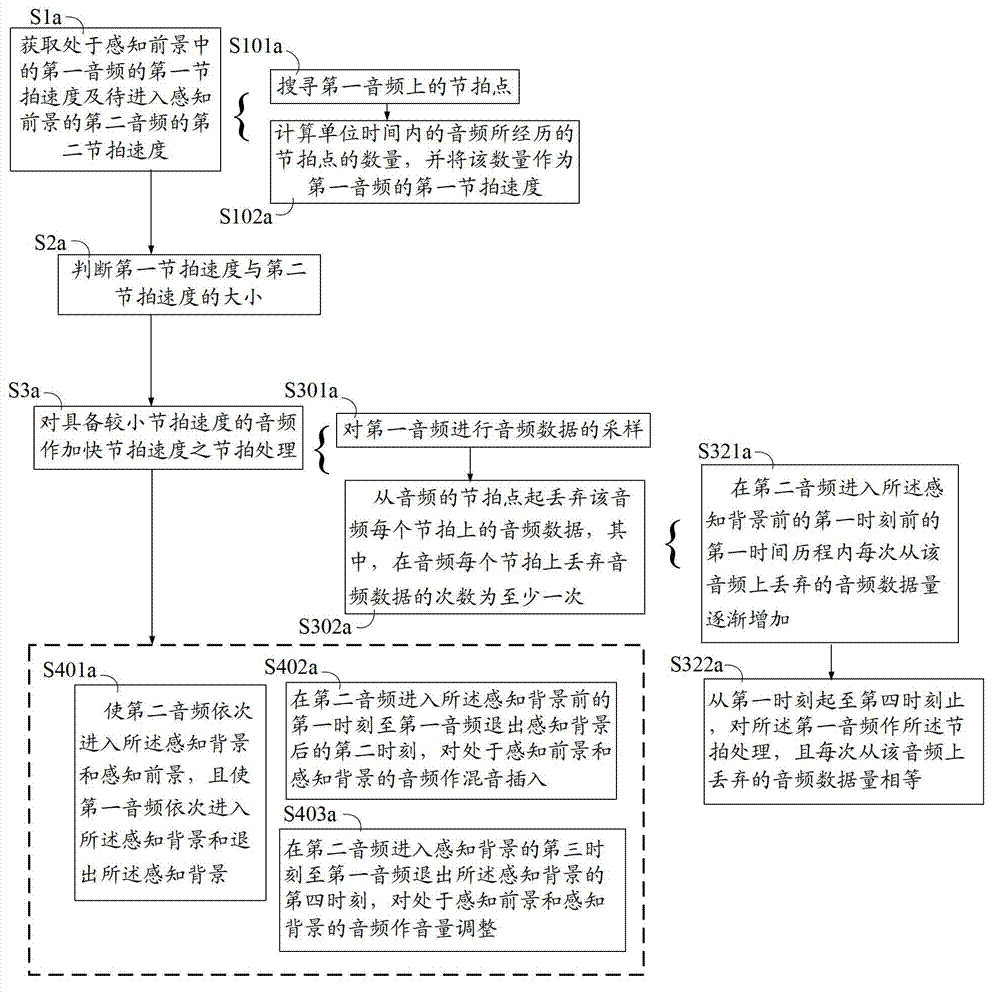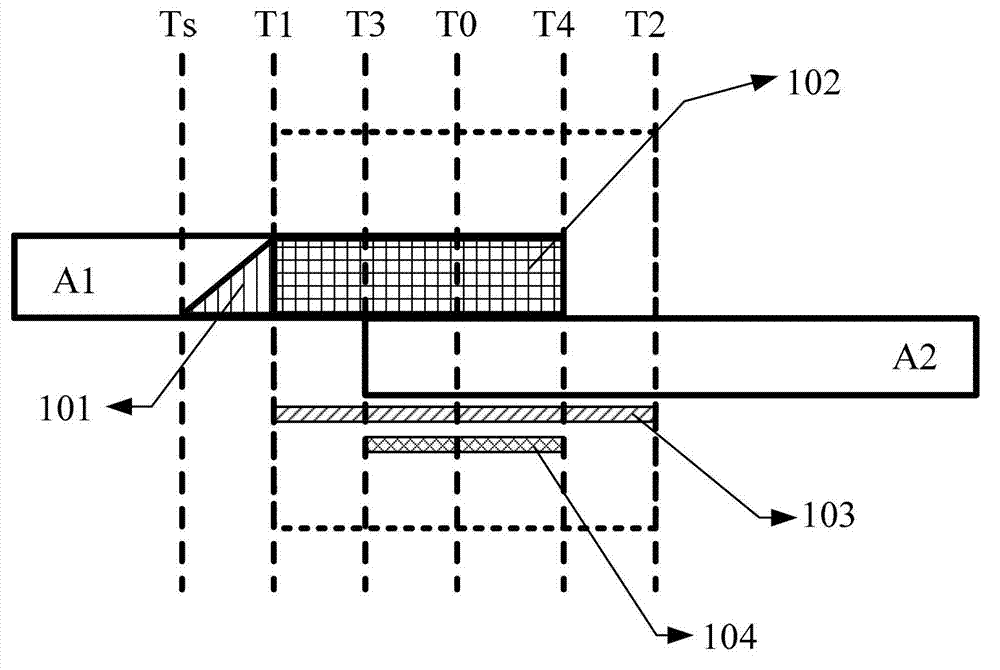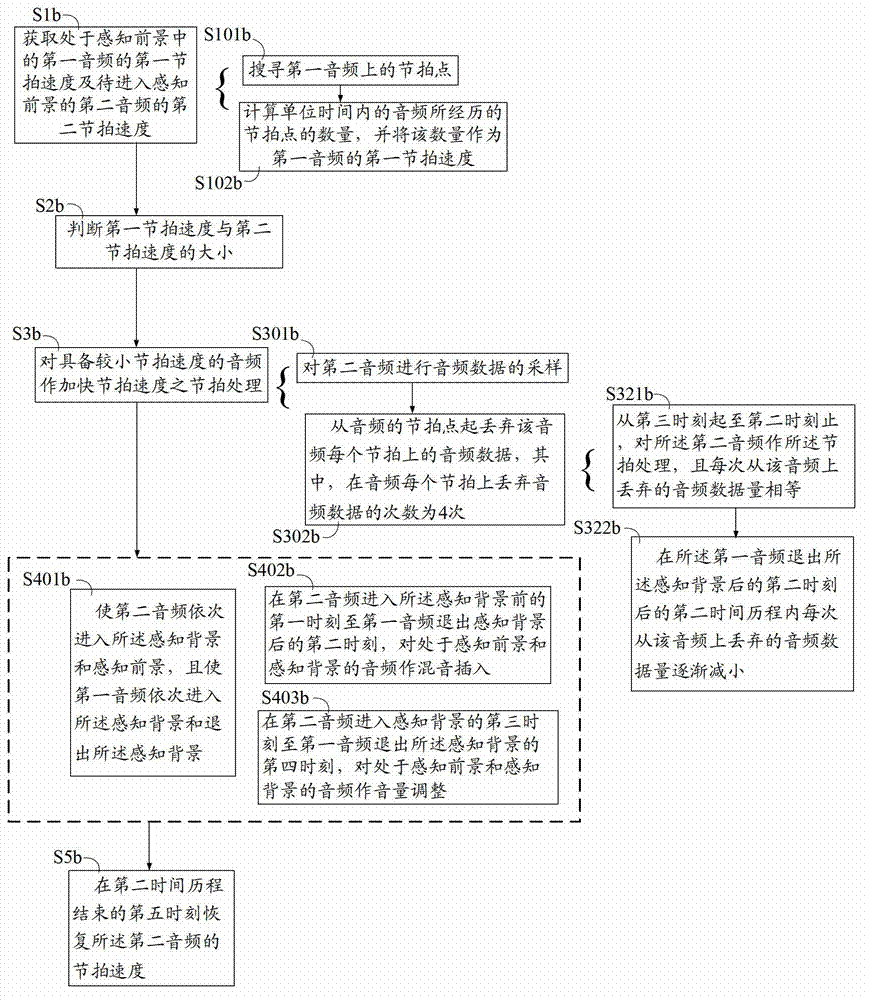Audio switching method and terminal device
A technology of terminal equipment and audio, which is applied in the field of audio switching methods and terminal equipment, can solve the problems of not considering the playback effect, etc., and achieve the effects of suitable performance occupation, high smoothness and small buffer capacity, and improved overall performance
- Summary
- Abstract
- Description
- Claims
- Application Information
AI Technical Summary
Problems solved by technology
Method used
Image
Examples
Embodiment 1
[0050] Such as figure 1 A method of audio switching is shown, including:
[0051] Step S1a: Obtain the first tempo of the first audio in the perceived foreground and the second tempo of the second audio to enter the perceived foreground.
[0052] Perceptual foreground and perceptual background are a description of the state of audio playback. Audio in the perceptual foreground or perceptual background is playing. The difference is that the audio in the perceptual foreground is the primary audio, and the audio in the perceptual background is the secondary audio. , audio in the perceptual foreground plays at a higher volume than audio in the perceptual background.
[0053] To obtain the first audio beat speed, the following steps may be specifically adopted:
[0054] Step S101a: Search for beat points on the first audio;
[0055] Step S102a: Calculate the number of tempo points experienced by the audio per unit time, and use this number as the first tempo of the first audio.
...
Embodiment 2
[0092] Such as image 3 A method of audio switching is shown, including:
[0093] Steps S1b~S2b: the same steps S1a~S2a as in Embodiment 1.
[0094] In this embodiment, the second tempo is smaller than the first tempo. For example, in this embodiment, the acquired first tempo is 63 (the number of beats in one minute of the first audio is 63), and the second tempo is 60. (The number of beats in one minute of the second audio is 60).
[0095] Step S3b: Perform tempo processing to speed up the tempo for the audio with a smaller tempo;
[0096] Since step S2a obtains that the second tempo is lower than the first tempo, the second audio must be subjected to tempo processing to speed up the tempo. combine Figure 4 , let Te be the time when the tempo processing of the second audio is finished, including the first time T1, the second time T2, the third time T3, and the fourth time T4.
[0097] The specific steps of the beat processing process of step S3b are as follows:
[0098...
Embodiment 3
[0133] The audio switching method of this embodiment is as follows: Figure 5 As shown, the difference with embodiment 1 and embodiment 2 is that this embodiment does not include:
[0134] When the first tempo is less than the second tempo, slowly increasing the audio data discarded on the first audio every time in the first time course;
[0135] When the second tempo is lower than the first tempo, the audio data discarded on the second audio is gradually reduced each time in the second time course.
[0136] The audio switching method of this embodiment includes:
[0137] Steps S1c~S2c: same as Steps S1a~S2a of Embodiment 1.
[0138] Step S3c: performing tempo processing to speed up the tempo for the audio with a smaller tempo;
[0139] The specific steps of the beat processing process are as follows:
[0140] Step S301c: Sampling the audio data of the audio with a smaller beat speed; generally, the number of samples per second is 44.1k / s;
[0141] Step S302c: Discard the...
PUM
 Login to View More
Login to View More Abstract
Description
Claims
Application Information
 Login to View More
Login to View More - R&D
- Intellectual Property
- Life Sciences
- Materials
- Tech Scout
- Unparalleled Data Quality
- Higher Quality Content
- 60% Fewer Hallucinations
Browse by: Latest US Patents, China's latest patents, Technical Efficacy Thesaurus, Application Domain, Technology Topic, Popular Technical Reports.
© 2025 PatSnap. All rights reserved.Legal|Privacy policy|Modern Slavery Act Transparency Statement|Sitemap|About US| Contact US: help@patsnap.com



